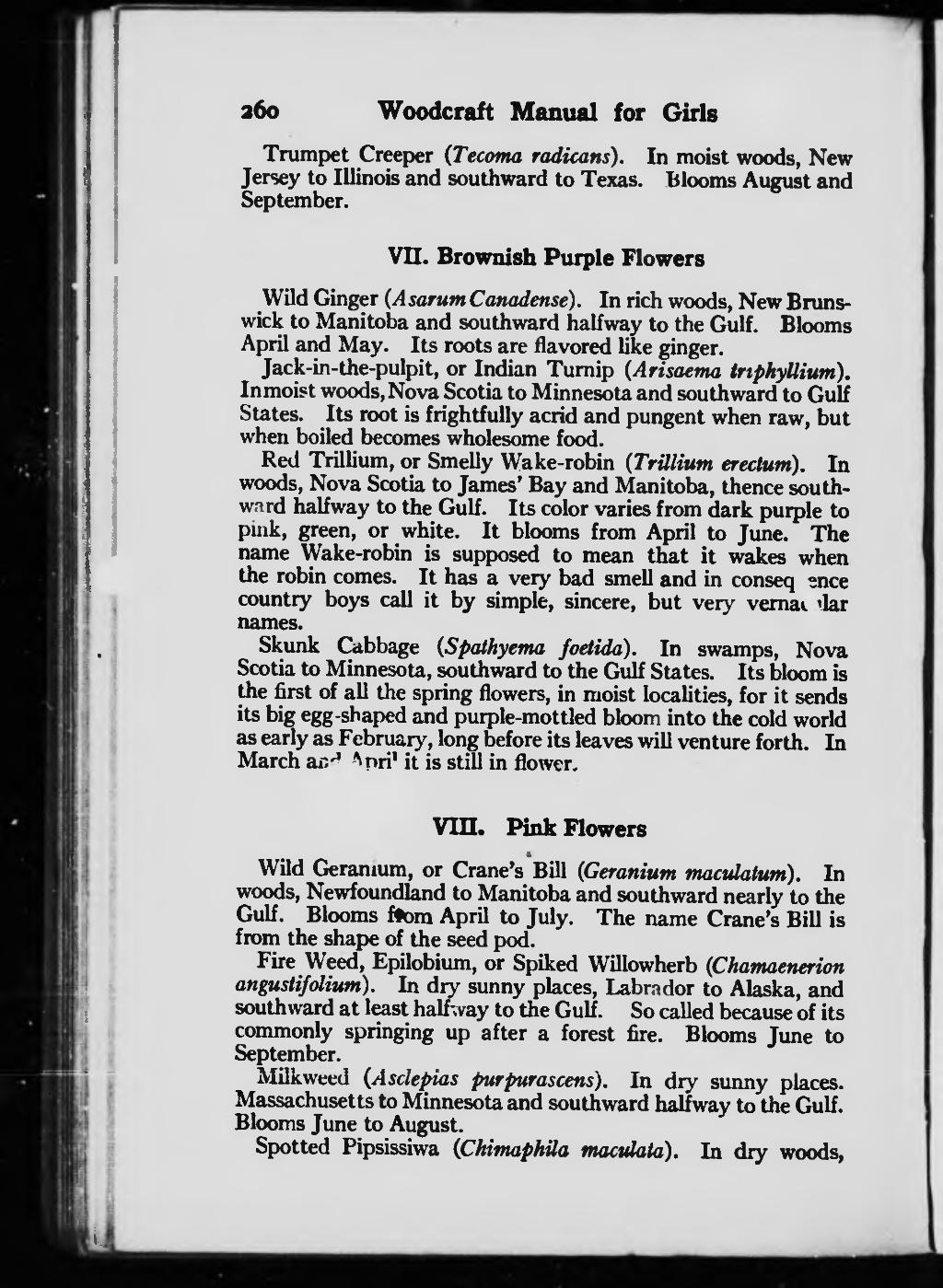ate Woodcraft Manual for Girlg Trumpet Creeper (Tecotna radicans). In moist woods, New Jersey to Illinois and southward to Texas. Blooms August and September. Vn. Brownish Purple Flowen Wild Ginger {A sarum Canadense) . In rich woods, New Bruns- wick to Manitoba and southward halfway to the Gulf. Blooms April and May. Its roots are flavored like ginger. Jack-in-the-pulpit, or Indian Turnip {Arisaema tnphyUium). Inmoist woods, Nova Scotia to Minnesota and southward to Gulf States. Its root is frightfully acrid and pungent when raw, but when boiled becomes wholesome food. Red TriUium, or Smelly Wake-robin {Trillium erectum). In woods, Nova Scotia to James' Bay and Manitoba, thence south- ward halfway to the Gulf. Its color varies from dark purple to pink, green, or white. It blooms from April to June. The name Wake-robin is supposed to mean tlmt it wakes when the robin comes. It has a very bad smell and in conseq ?nce country boys call it by simple, sincere, but very venuti Alar names. Skunk Cabbage (Spaihyema foetida). In swamps. Nova Scotia to Minnesota, southward to the Gulf States. Its bloom is the first of all the spring flowers, in moist localities, for it sends its big egg-shaped and purple-mottled bloom into the cold world as early as February, long before its leaves will venture forth. In March ac* ^pri' it b stm in flower. Vm. Pink Flowen Wild Geranium, or Crane's*Bill {Geranium maculatum). In woods, Newfoundland to Manitoba and southward nearly to the Gulf. Blooms ftom April to July. The name Crane's BiU is from the shape of the seed pod. Fire Weed, Epilobium, or Spiked Willowherb {Chamaenerion angustifolium). In dry sunny places, Labrador to Alaska, and southward at least halfTvay to the Gulf. So called because of its commonly springing iq> alter a forest 6k. Blooms June to September. Milkweed (Asclepias purpurascens). In dry simny places. Massachusetts to Minnesota and southward halfway to the Gulf. Blooms June to August. Spotted Pipsissiwa (Ckimaphila maculaia). In dry woods.
Stránka:roll 1916.djvu/284
Z thewoodcraft.org
Tato stránka nebyla zkontrolována
